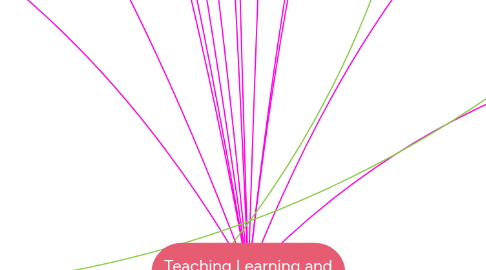
1. TRIBES:
1.1. ATTENTIVE LISTENING -APPRECIATION/NO PUT DOWNS
1.2. THE RIGHT TO PASS
1.3. MUTUAL RESPECT THE RIGHT TO PARTICIPATE
2. Multicultural Education
2.1. Protective Factors in Aboriginal Education
2.1.1. Early intervention
2.1.2. Resiliency
2.1.3. Positive self-image
2.1.4. Family engagement
2.1.5. Community involvement
2.1.6. Relevant programming
2.1.7. Aboriginal role model
2.2. Risk Factors
2.2.1. Early school failures
2.2.2. Moving from school to school
2.2.3. Lack of parent support
2.2.4. Lack of teachers with knowledge of Aboriginal studies
2.2.5. Living in remote communities
2.2.6. Lack of resources
2.2.7. Special need
3. Being culturally competent as a teacher is critical to guiding assessments
3.1. Cultural Model of support
3.2. https://www.youtube.com/watch?v=_uOncGZWxDc&feature=youtu.be
4. Types of Assessments
4.1. Agricultural Model
4.2. Backwards Design
4.2.1. What is Understanding by Design? Author Jay McTighe explains.
4.3. Enduring Understandings
4.3.1. Identify desired results
4.3.2. Determine Acceptable Evidence
4.3.3. Plan learning experiences and instruction
4.4. Feedback/Comments
4.4.1. Leads to more gains in achievement
4.4.2. Oral feedback is more effective than written feedback
4.5. Direct Reading Assessment
4.6. Diagnostic Assessments
4.7. Speech and Language Screening
5. Instructional Strategies
5.1. Student Centered
5.2. Teaching Centered
5.3. Cooperative learning
5.4. Graphic organizers
5.5. Homework and questions
5.6. Universal Design for Learning
5.7. Differentiated Instruction
5.8. Response to Intervention
6. Learning Theories and Perspectives
6.1. Vygotsky:
6.1.1. Piaget:
6.1.1.1. Constructivist Approach:
6.1.1.2. Students construct their own learning
6.1.1.3. Social interaction is critical to learning
6.1.1.4. Learning to think critically, solve problems, and answer questions
6.1.1.5. Self-motivation is needed to development and learning
6.1.2. Cognitive Theory
6.1.2.1. Brofenbrenner's ecological systems theory
6.1.3. Schemas/Schemes
6.1.4. Adaptation
6.2. Zone of Proximal Development
6.3. Social Interaction
6.4. Scaffolding
7. Linking Assessment with Instruction
7.1. Bloom's Taxonomy
7.1.1. 1. Knowledge
7.1.2. 2. Comprehension
7.1.3. 3. Application
7.1.4. 4. Analysis
7.1.5. 5. Synthesis
7.1.6. 6. Evaluation
7.2. Categorizing Thinking for assessment
7.3. 1.Remembering
7.4. 2. Understanding
7.5. 3. Applying
7.6. 4. Analyzing
7.7. 5. Creating
7.8. 6. Evaluating
7.9. Carroll’s Hierarchical Model of Intelligence
8. Supporting students with additional needs
8.1. Medical Model
8.2. Social model
8.3. Differentiated Instruction
8.4. Labelling
8.4.1. Disability
8.4.1.1. Handicap
8.5. Inclusion
8.5.1. Acceptance of differences
8.5.2. Instruction focuses on appropriate teacher interventions
8.5.3. Material being taught is made accessible to all students
8.6. Diverse Learners
9. Types of disabilities
9.1. Mental/Cognitive
9.2. Physical
9.3. High-incidence
9.4. Low-incidences
10. "School systems are not responsible for meeting every need of their students. But when the need directly affects learning, the school must meet the challenge"
11. Diversity in the Classroom
11.1. Languages spoken
11.2. Aboriginal students
11.3. One-parent families
11.4. Same-sex couples
11.5. Newcomers to Canada
11.6. Religions practised
11.7. Student Dilemma
11.7.1. Individualism
11.7.2. Collectivism
11.7.3. Stereotype Threat
11.8. Differences in Socio-Economic Status
11.8.1. A student's SOE has the biggest influence on a student's academic success
12. Standardize Testing
12.1. Types of Tests
12.1.1. Criterion-Referenced
12.1.2. Norm-Referenced
12.1.3. Provincial -EQAO
12.1.4. Federal
12.2. Purpose: Assess effectiveness of instruction and track student achievement level in Ontario
12.3. Cons of Standardized Testing
12.3.1. Biased tests
12.3.2. Stressful for students and teachers
12.3.3. Results in teaching to the test
12.3.4. Takes up too much time
12.3.5. Does not enhance student learning
12.3.6. Content of tests does not reflect instruction
12.4. How to prepare students for standardized testing
12.4.1. Convey positive attitudes about testing
12.4.2. Teach test-taking skills
12.4.3. Simulate use of time limits during testing
12.4.4. Familiarize students with types of questions used
12.4.5. Involve students in marking questions of each type
13. The Different ways that people learn
13.1. Knowledge-Centredness
13.2. Learner-Centeredness
13.3. Community-Centredness
13.4. Assessment-Centredness
14. Self-Regulated Learning and Self-Efficacy
14.1. Tasks
14.2. Collaboration
14.3. Self-Evaluation
14.4. Control
14.5. Zoe Branigan-Pipe - Letting Students Hack Their Lesson Plan
15. Effective Teacher Planning:
15.1. Being aware of the Interests of students
15.2. The students area of appeal or curiosity ( think horses)
15.3. The students skill development level and readiness for the material
16. Effective Teaching
16.1. To be an effective teacher and improve teaching and learning processes, you must reflect on teacher practice and use research
16.2. Good Classroom Management
16.2.1. Caring classroom management approach:
16.2.2. Proximity
16.2.3. Touch
16.2.4. Student’s Name
16.2.5. Gesture
16.2.6. The Look
16.2.7. The Pause
16.2.8. Ignore
16.2.9. Signal to Begin / Signal for Attention -Deal with the problem not the student
17. What is the Role of Educational Psychology in our Classrooms?
17.1. Goal of Educational Psychology:
17.1.1. Excellent instruction, enhanced student learning, exemplary environments, reviewing student files
17.2. Uses knowledge and methods of psychology and related disciplines to study teaching and learning
17.3. To improve the teaching and learning processes
18. Teacher Concerns
18.1. -Managing students with behaviour issues
18.1.1. Managing students with behaviour disorders
18.1.1.1. -Knowing how to effectively implement a behaviour management program in the classroom
19. How teacher's impact student achievement...
19.1. Choosing how to teach the curriculum to students
19.2. Determining which instruction strategies are most effective
19.3. Classroom management style
19.4. Characteristics of exemplary Learning Environments/Good Classroom management
19.4.1. Good planning and classroom management
19.4.1.1. Good classroom management is important for students with additional needs
20. SELF
20.1. Characteristics of Resilient Children
20.2. Good self-esteem
20.3. Sense of competence
20.4. Optimistic
20.5. Personal control
20.6. Feel connected
20.7. Motivated to learn
20.8. Self-disciplined
20.9. Teacher self-efficacy and student efficacy impact learning
21. Motivating Students
21.1. Challenging and meaningful tasks
21.2. Being able to effectively use learning strategies
21.3. Having teacher support
21.4. Being required to demonstrate knowledge
21.5. Feeling that the teacher cares for them
22. Different Philosophy's for Teaching
22.1. Exploratory/Inquiry
22.2. Direct/Specific Instruction and procedures
22.2.1. Clear learning objectives
22.2.2. Well-planned lessons
22.2.3. Explicit teaching
22.2.4. Lots of practice

